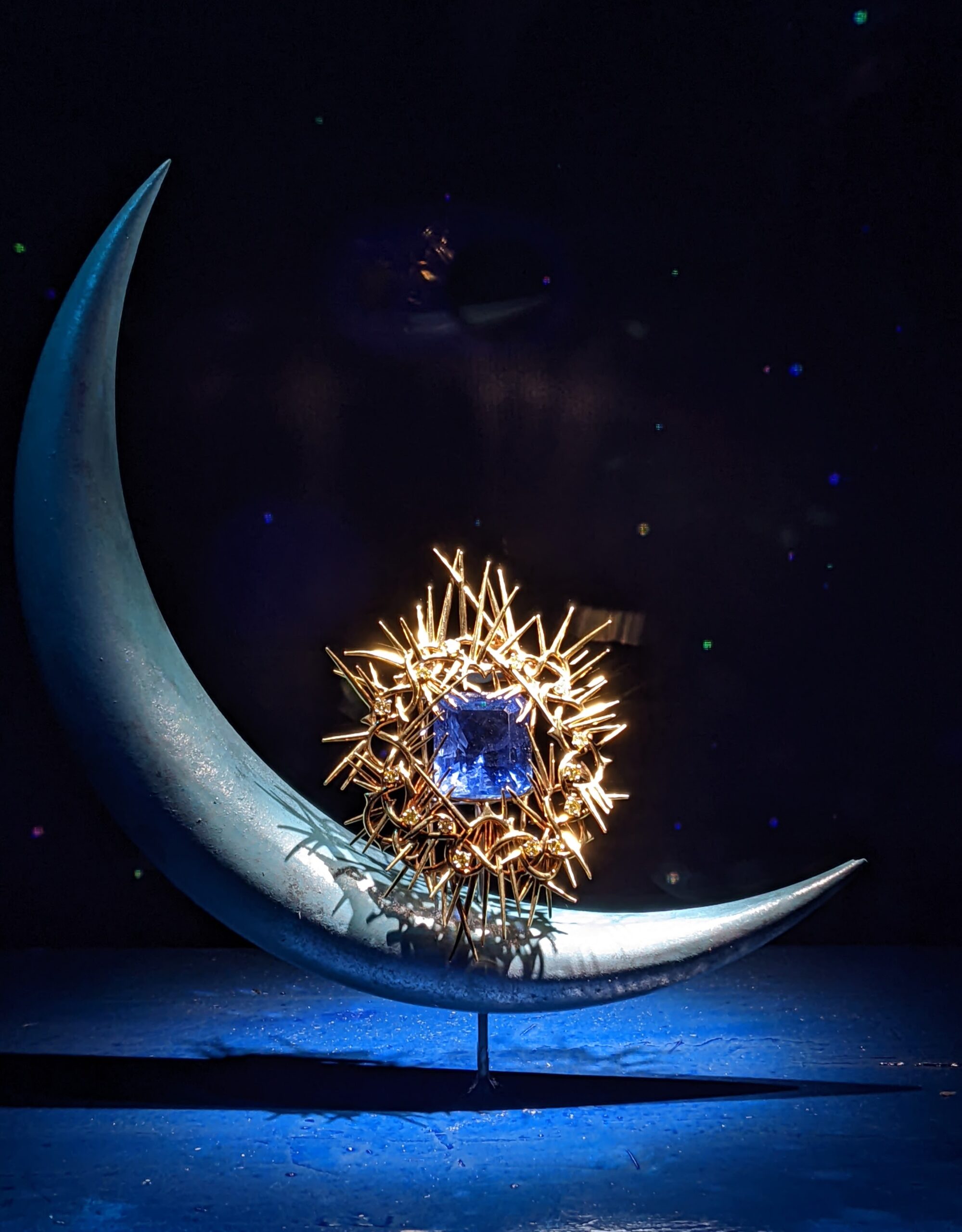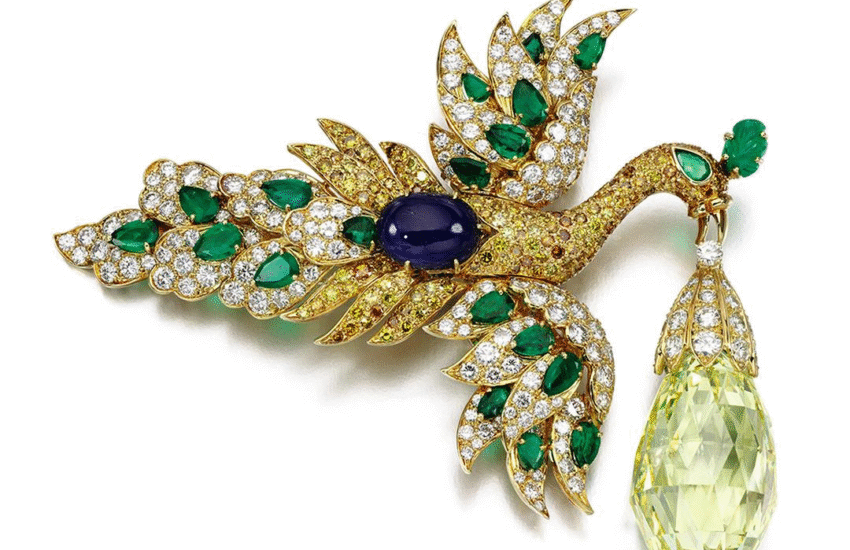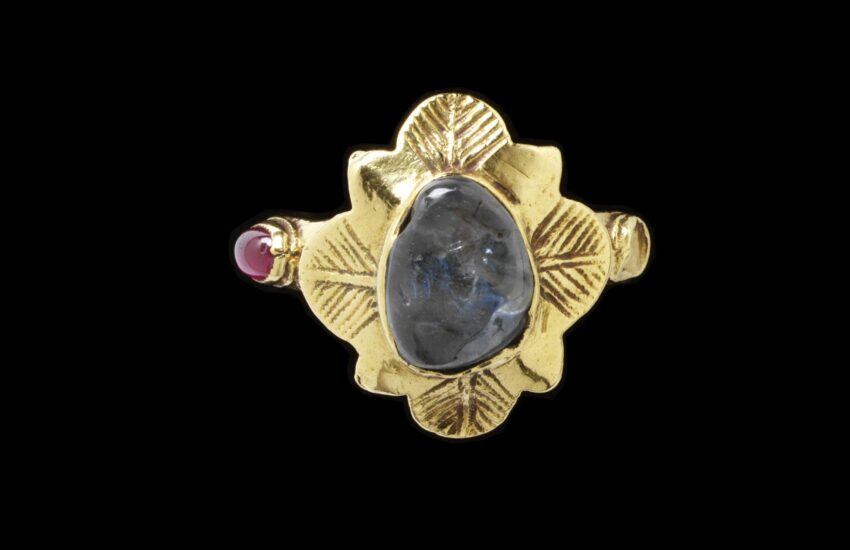London’s jewellery summer: dazzling diamonds and sparkling tiaras
London’s jewellery lovers have been spoilt for choice this summer.
The Queen is celebrating her Platinum Jubilee, commemorating seventy years on the throne, with several fabulous exhibitions. An exhibition of tiaras at Sotheby’s auction house brought together an amazing selection of jewels. Displays at Buckingham Palace and Windsor Castle followed, bringing together some of her best loved jewels. In addition, Tiffany’s celebrated their own London landmark – 150 years of jewellery in the city.
Sotheby’s cornucopia of diamond tiaras
Sotheby’s marked the Jubilee with a free display in the Bing Gallery, Bond Street. Power & Image: Royal & Aristocratic Tiaras brought together over forty exceptional tiaras, from aristocratic and royal collections to works made by contemporary artist-jewellers.
The diamond and emerald diadem designed by Prince Albert for Queen Victoria is one of the finest jewels on display. After their marriage, Victoria and Albert settled down to organise her jewels. Albert, who had a keen eye for design, sketched ideas for jewels to be made from her existing gemstones. This diadem was made for her by the London jeweller Joseph Kitching. Her diamond and sapphire coronet, also designed by Albert and made by Kitching, is now on display in the Victoria and Albert Museum.

©Sotheby and Co.
The display includes jewels from the great jewellery houses – Fabergé, Cartier, Lacloche, Van Cleef and Arpels.
This waveform tiara by Cartier, 1904, is the pure embodiment of Edwardian glamour. Like many tiaras, it breaks up into smaller jewels. For less formal occasions, it breaks up into four separate brooches.
Individual cases around the walls and throughout the room showcase glittering tiaras. To help the visitor appreciate them better, clever invisible wires suspend the tiaras and rotate them to allow them to be viewed in the round.
Tiffany’s Vision and Virtuosity
Everyone has heard of Tiffany and Co., through their jewels, films and even music. For lucky Londoners, the Saatchi Gallery hosts Vision and Virtuosity, a free exhibition from 10 June to 19 August 2022.
The exhibition marks 150 years of Tiffany in London. Due to this long history, the curators have been able to draw upon over 400 jewels and documents from the archive. Visiting the exhibition shows both the skills of Tiffany’s jewellers and designers but also their success in building a world wide brand.
It’s divided into seven discrete chapters, exploring Tiffany’s history, its role in popular culture and the trademark diamond love rings.
To set the scene, the art of Tiffany’s window dressers is celebrated in a series of eye-catching displays. Each case is like a little doll’s house or theatre set, centering on a jewel from the company archive.


Tiffany’s visionary mid-twentieth century designers, Jean Schlumber and Elsa Peretti, are celebrated in the World of Tiffany section. Documents and images from the archive, alongside jewels from the collection, bring the history of the firm to life.

The Blue Book may have begun life as a trade catalogue but it has developed its own fame. Looking through the pages of the Blue Book gives us a potted history of Tiffany’s designs since their foundation in 1837.
Tiffany engagement and love rings
Tiffany claim to have invented the diamond engagement ring. Jewellery history, going back to the Renaissance Medici weddings, suggests this isn’t entirely accurate. However, they certainly popularised them, and through the invention of the Tiffany setting, made them much bigger and sparklier. There is a dedicated room to showcase some of their current range, alongside an interactive screen for lovers to share their feelings.
If you have been persuaded by this, you can move into a salon and try on (or buy?) your own Tifffany diamond.
Tiffany’s on screen
Breakfast at Tiffany’s brought a luminous Audrey Hepburn to the big screen. Whenever her character Holly Golightly suffered from the ‘mean reds’, looking at the Tiffany windows helped to soothe them. As well as the film script and winning Oscars, the exhibition includes her iconic Givenchy black dress. Visitors can put themselves in the frame with a photograph in front of a yellow New York taxi, set against the New York skyline.
Platinum Jubilee: the Queen’s Accession
Celebrating seventy years on the throne is no mean feat. Jewellery has been an important part of Elizabeth II’s public and private life. Therefore, what could be more fitting than celebrating her reign through her love of jewellery?
Some of her most iconic jewels are displayed as part of the State Rooms tour, near the throne room, state dining room and sitting rooms, they were so often worn in.

©Royal Collections Trust
The exhibition at Buckingham Palace ( marks her accession to the throne in February 1952. To celebrate her accession, photographer Dorothy Wilding took a series of photographs of the Queen. The jewels worn in these photographs, blown up to large size, sparkle behind non-reflective glass. It’s a clever idea which bring the photographs to life and puts the jewels into their historical context.
Unlike the vast range of the Tiffany exhibition, the Palace displays only a dozen or so jewels. But what jewels!
Great state jewels like the Diamond Diadem, made for the coronation of George IV sit alongside some of the Queen’s most cherished personal jewelllery.
The tiaras

©Royal Collections Trust
The exhibition includes the Girls of Great Britain and Ireland and the Vladimir Tiaras. The first one was made as a wedding present for Princess May of Teck, the future Queen Mary. As you might expect, she was delighted by this handsome gift. She wrote to Lady Eva Greville, the head of the fund-raising committee to say:
“How can I find the words sufficiently to thank you and all the young ladies of England for the truly magnificent present I have received? I need scarcely assure you that the tiara will ever be one of my most valued wedding gifts as a precious proof of your goodwill and affection.”

©Royal Collections Trust
The Vladimir tiara, which can be worn with large pendant pearls or enormous emeralds, has an amazing story. The Russian Grand Duchess Vladimir, Marie Pavlovna, commissioned it, probably from the court jewellers Bolin. Forced to flee by the 1917 Revolution, she hid her jewels in her former palace. Her son and the British art dealer Bertie Stopford hatched a dangerous plan to rescue them, and finally successfully smuggled out of Russia in a Gladstone bag.
An imperial marvel
The Delhi Durbar necklace was my favourite jewel in the show. It’s an amazing creation – an Edwardian necklace with an asymmetric négligée pendant, made up of the Cambridge emeralds and South African diamonds.
George V commissioned it from the royal jewellers Garrard’s in 1911 as a 44th birthday present for his wife Queen Mary.
You could consider it as the British Empire condensed into a single jewel.
It was also a much needed piece of adornment. George and Mary were on the point of being crowned as Emperor and Queen Empress of India, still under British rule. A fabulous celebration, the Delhi Durbar, was planned.
Maharajahs on gem clad elephants, the cream of British India society and the troops of the Indian army assembled in Delhi for a display of power and magnificence.
In consequence, Queen Mary needed some jewels which could hold their own.
To obtain sufficiently magnificent jewels, she combined her best gemstones.
She had recently bought back the fabulous Cambridge emeralds which her mother had won in a lottery. She combined them with some of the finest South African diamonds, she could get, not least the large brilliant-cut diamond on the pendant. Cutting the enormous Cullinan diamond, recently found, created nine named gemstones and 96 smaller brilliants. Garrard added Cullinan VII, one of the smaller stones, to add extra dazzle to May’s necklace.
By the time the Queen wore the necklace to be photographed by Dorothy Wilding, India had won its independence and South Africa was about to follow. The necklace, made at the heyday of the British Empire, saw out its ending.
If you missed these shows….
If you weren’t able to see these exhibitions, all is not lost. London’s jewellery summer lives on in other ways.
The Tiffany Vision and Virtuosity exhibition is moving on to New York in Autumn 2022. It was also accompanied by a large hardback catalogue by John Loring, published by Assouline, 2022.
The Royal Collections website has information about the jewels on show and the stories behind them, including an excellent film on Dorothy Wilding. Diamonds: The Queen’s collection, by Caroline de Guitaut, March 2022, includes many of the jewels shown in the exhibition with excellent colour photographs.
To read more about royal jewels, here is the sad story of a lost prince and the locket his mother gave him.





